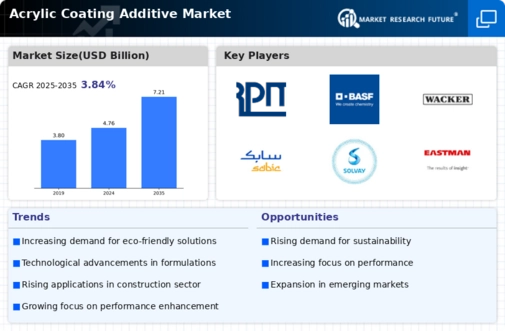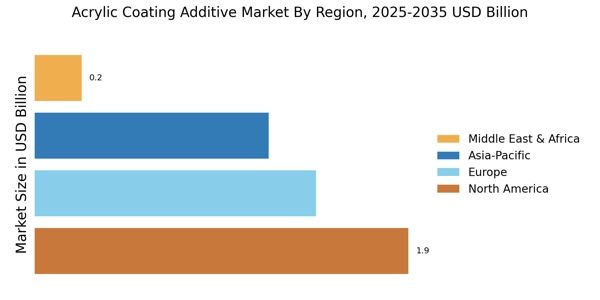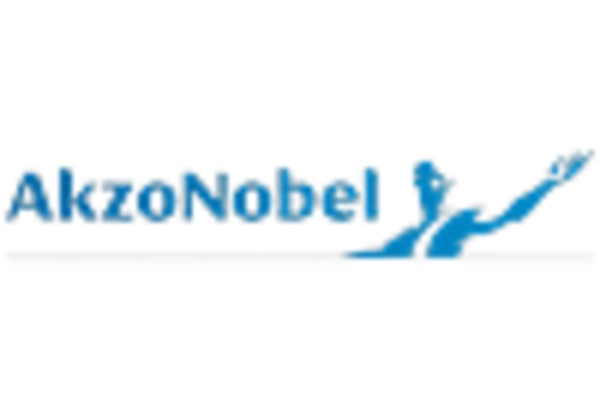The Acrylic Coating Additive Market is currently characterized by a dynamic competitive landscape, driven by increasing demand for high-performance coatings across various industries, including automotive, construction, and consumer goods. Key players such as BASF SE (Germany), Dow Inc. (US), and AkzoNobel N.V. (Netherlands) are strategically positioned to leverage their extensive product portfolios and innovative capabilities. These companies are focusing on sustainability and digital transformation, which appear to be pivotal in shaping their operational strategies. The collective emphasis on research and development, alongside strategic partnerships, is likely to enhance their competitive edge in this evolving market.
In terms of business tactics, companies are increasingly localizing manufacturing to reduce lead times and optimize supply chains. The market structure is moderately fragmented, with several players vying for market share. However, the influence of major companies like Sherwin-Williams Company (US) and PPG Industries, Inc. (US) is substantial, as they continue to expand their global footprint and enhance their product offerings. This competitive structure suggests that while there is room for smaller players, the dominance of these key players shapes market dynamics significantly.
In August 2025, BASF SE (Germany) announced the launch of a new line of eco-friendly acrylic additives aimed at reducing environmental impact while maintaining high performance. This strategic move not only aligns with global sustainability trends but also positions BASF as a leader in the development of innovative solutions that meet the growing demand for environmentally responsible products. The introduction of these additives is expected to enhance their market share and appeal to environmentally conscious consumers.
In September 2025, Dow Inc. (US) unveiled a partnership with a leading technology firm to integrate AI-driven analytics into their production processes. This initiative is anticipated to optimize operational efficiency and reduce costs, thereby enhancing their competitive positioning. The integration of advanced technologies reflects a broader trend within the industry towards digitalization, which is likely to redefine operational paradigms and improve product quality.
In July 2025, AkzoNobel N.V. (Netherlands) expanded its manufacturing capabilities in Asia through a strategic acquisition of a local additive manufacturer. This acquisition is expected to bolster AkzoNobel's presence in the rapidly growing Asian market, allowing for localized production and quicker response times to customer needs. Such strategic expansions are indicative of a trend where companies are seeking to enhance their regional capabilities to better serve diverse markets.
As of October 2025, the Acrylic Coating Additive Market is witnessing significant trends such as digitalization, sustainability, and the integration of advanced technologies like AI. Strategic alliances are becoming increasingly important, as companies recognize the value of collaboration in driving innovation and enhancing supply chain reliability. Looking ahead, competitive differentiation is likely to evolve from traditional price-based competition to a focus on innovation, technological advancements, and sustainable practices, which will be crucial for long-term success in this market.


















Leave a Comment